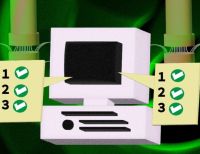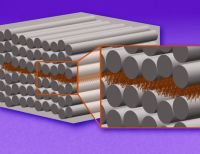Renewable energy today — mainly derived from the sun or wind — depends on batteries for storage. While costs have dropped in recent years, the pursuit of more efficient means of storing renewable power continues.
“All of these technologies, unfortunately, have a long way to go,” said Sossina Haile SB ’86, PhD ’92, the Walter P. Murphy Professor of Materials Science and Engineering at Northwestern University, at recent talk at MIT. She was the speaker of the fall 2023 Wulff Lecture, an event hosted by the Department of Materials Science and Engineering (DMSE) to ignite enthusiasm for the discipline.
To add to the renewable energy mix — and help quicken the pace to a sustainable future — Haile is working on an approach based on hydrogen in fuel cells, particularly for eco-friendly fuel in cars. Fuel cells, like batteries, produce electricity from chemical reactions but don’t lose their charge so long as fuel is supplied.
To generate power, the hydrogen must be pure — not attached to another molecule. Most methods of producing hydrogen today require burning fossil fuel, which generates planet-heating carbon emissions. Haile proposes a “green” process using renewable electricity to extract the hydrogen from steam.
When hydrogen is used in a fuel cell, “you have water as the product, and that’s the beautiful zero emissions,” Haile said, referring to the renewable energy production cycle that is set in motion.
Ammonia fuels hydrogen’s potential
Hydrogen is not yet widely used as a fuel because it’s difficult to transport. For one, it has low energy density, meaning a large volume of hydrogen gas is needed to store a usable amount of energy. And storing it is challenging because hydrogen’s tiny molecules can infiltrate metal tanks or pipes, causing cracks and gas leakage.
Haile’s solution for transporting hydrogen is using ammonia to “carry” it. Ammonia is three parts hydrogen and one part nitrogen, so the hydrogen needs to be separated from the nitrogen before it can be used in the kind of fuel cells that can power cars.
Ammonia has some advantages, including using existing pipelines and a high transmission capacity, Haile said — so more power can be transmitted at any given time.
To extract the hydrogen from ammonia, Haile has built devices that look a lot like fuel cells, with cesium dihydrogen phosphate as an electrolyte. The “superprotonic” material displays high proton conductivity — it allows protons, or positively charged particles, to move through it. This is important for hydrogen, which has just a proton and an electron. By letting only protons through the electrolyte, the device strips hydrogen from the ammonia, leaving behind the nitrogen.
The material has other benefits, too, Haile said: “It’s inexpensive, nontoxic, earth-abundant — all these good things that you want to have when you think about a sustainable energy technology.”














